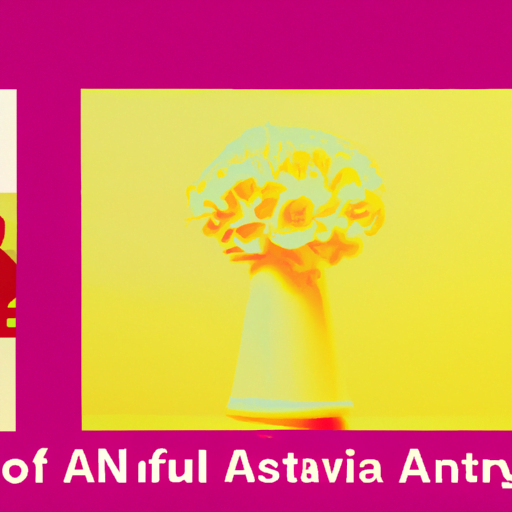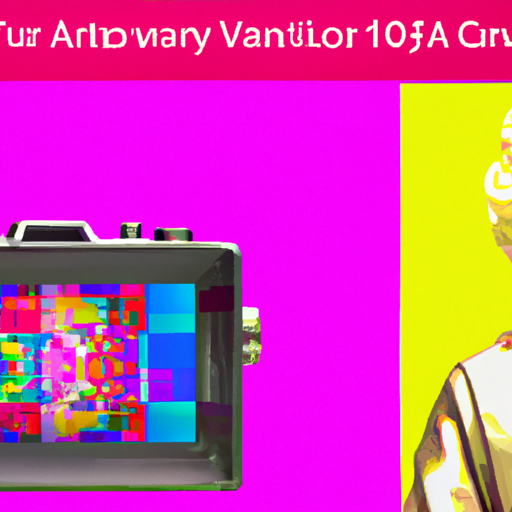
-
Table of Contents
- Augmented Creativity: How AI Expands Designers’ Possibilities
- The Role of AI in Design
- 1. Design Automation
- 2. Design Assistance
- 3. Design Enhancement
- The Benefits of Augmented Creativity
- 1. Increased Efficiency
- 2. Enhanced Creativity
- 3. Improved Decision Making
- 4. Accessible Design Tools
- The Future of Augmented Creativity
- 1. Personalized Design Experiences
- 2. Collaborative Design with AI
- 3. Ethical Design Guidelines
- Conclusion
Augmented Creativity: How AI Expands Designers’ Possibilities

Artificial Intelligence (AI) has revolutionized various industries, and the world of design is no exception. Designers have always relied on their creativity and imagination to bring ideas to life, but with the advent of AI, their possibilities have expanded exponentially. Augmented creativity, the combination of human creativity and AI capabilities, has opened up new avenues for designers to explore and create innovative solutions. In this article, we will delve into the ways AI is transforming the design process and the benefits it brings to designers.
The Role of AI in Design
AI has become an indispensable tool for designers, enabling them to streamline their workflow, enhance their creativity, and push the boundaries of what is possible. Here are some key areas where AI is making a significant impact:
1. Design Automation
One of the most significant contributions of AI to the design field is automation. AI-powered tools can automate repetitive and time-consuming tasks, allowing designers to focus on more creative and strategic aspects of their work. For example, AI algorithms can generate multiple design variations based on a given set of parameters, saving designers hours of manual work. This not only speeds up the design process but also provides designers with a broader range of options to choose from.
Case Study: The Grid
The Grid is a website design platform that uses AI to automate the entire design process. By analyzing content and user preferences, it generates unique and personalized designs for each user. The AI algorithms take care of layout, color schemes, and typography, freeing up designers to focus on higher-level tasks such as content creation and strategy.
2. Design Assistance
AI can act as a valuable assistant to designers, providing them with suggestions, insights, and inspiration. By analyzing vast amounts of data, AI algorithms can identify patterns, trends, and user preferences, helping designers make informed decisions. For example, AI-powered tools can analyze user feedback and behavior to suggest design improvements or identify potential usability issues.
Case Study: Adobe Sensei
Adobe Sensei is an AI-powered platform that assists designers in various ways. It can automatically tag and organize design assets, making it easier for designers to search and retrieve specific files. It can also suggest color palettes, font combinations, and layout options based on the content and context of the design project. These AI-powered suggestions act as a starting point for designers, sparking their creativity and saving them time.
3. Design Enhancement
AI can enhance the quality and aesthetics of designs by providing intelligent recommendations and refinements. By analyzing existing designs and user preferences, AI algorithms can suggest improvements, such as adjusting color balance, optimizing image composition, or enhancing typography. This helps designers create visually appealing and engaging designs that resonate with their target audience.
Case Study: Canva
Canva, a popular graphic design platform, uses AI to enhance the design experience for its users. It provides intelligent design suggestions, such as cropping images to improve composition or applying filters to enhance visual appeal. These AI-powered enhancements empower designers, even those with limited design skills, to create professional-looking designs effortlessly.
The Benefits of Augmented Creativity
The integration of AI into the design process brings numerous benefits to designers. Here are some key advantages of augmented creativity:
1. Increased Efficiency
By automating repetitive tasks and providing design assistance, AI enables designers to work more efficiently. This not only saves time but also allows designers to focus on higher-level tasks that require their creative expertise. With AI handling mundane tasks, designers can allocate their time and energy to more meaningful and impactful aspects of the design process.
2. Enhanced Creativity
Contrary to the fear that AI might replace human creativity, it actually enhances it. AI-powered tools provide designers with new perspectives, suggestions, and inspiration, sparking their creativity and pushing them to explore uncharted territories. By leveraging AI capabilities, designers can break free from creative blocks and discover innovative solutions that they might not have considered otherwise.
3. Improved Decision Making
AI algorithms can analyze vast amounts of data and provide designers with valuable insights and recommendations. This helps designers make informed decisions based on user preferences, market trends, and design best practices. By leveraging AI’s analytical capabilities, designers can create designs that are not only visually appealing but also aligned with the needs and expectations of their target audience.
4. Accessible Design Tools
AI-powered design tools, such as Canva and The Grid, make design accessible to a wider audience. These tools democratize design by providing intuitive interfaces, intelligent suggestions, and automation features that simplify the design process. As a result, individuals with limited design skills can create professional-looking designs, opening up new opportunities for small businesses, entrepreneurs, and non-designers.
The Future of Augmented Creativity
The potential of augmented creativity is vast, and its future looks promising. As AI continues to advance, we can expect even more sophisticated tools and capabilities that will further augment designers’ creativity. Here are some potential developments on the horizon:
1. Personalized Design Experiences
AI algorithms can analyze user preferences, behavior, and context to create personalized design experiences. Design tools could adapt to individual designers’ styles and preferences, providing tailored suggestions and automating tasks based on their unique needs. This level of personalization would empower designers to work more efficiently and create designs that resonate with their personal aesthetic and brand identity.
2. Collaborative Design with AI
AI has the potential to facilitate collaboration between designers and machines. Design tools could become intelligent design partners, actively participating in the creative process by suggesting ideas, refining designs, and providing real-time feedback. This collaborative approach would leverage the strengths of both humans and AI, resulting in more innovative and impactful designs.
3. Ethical Design Guidelines
As AI becomes more integrated into the design process, ethical considerations become crucial. AI algorithms should be designed to prioritize ethical principles, such as inclusivity, diversity, and accessibility. Design tools could incorporate AI-powered features that analyze designs for potential biases or discriminatory elements, ensuring that designers create designs that are fair, inclusive, and respectful of diverse audiences.
Conclusion
Augmented creativity, the fusion of human creativity and AI capabilities, is transforming the design landscape. AI-powered tools automate repetitive tasks, provide design assistance, and enhance the quality of designs. The benefits of augmented creativity include increased efficiency, enhanced creativity, improved decision making, and accessible design tools. As AI continues to advance, the future of augmented creativity holds exciting possibilities, such as personalized design experiences, collaborative design with AI, and ethical design guidelines. By embracing AI, designers can unlock new levels of creativity and push the boundaries of what is possible in the world of design.</
